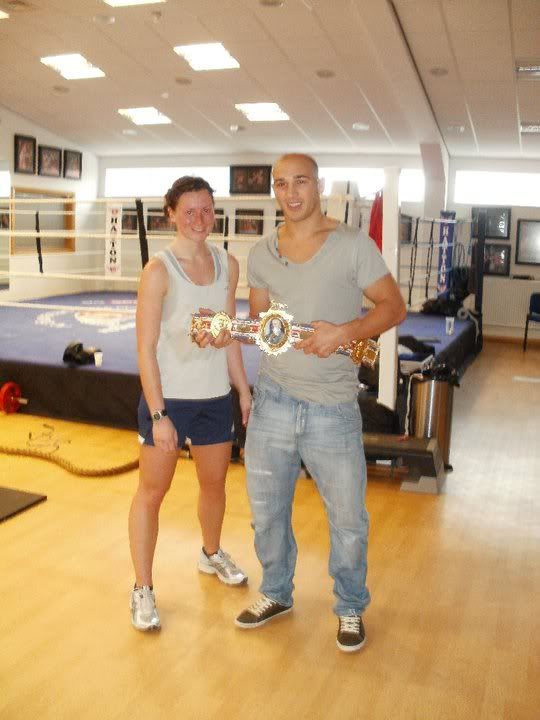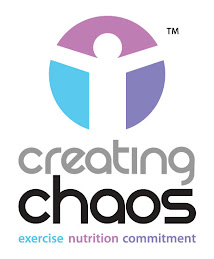Our Day at the Hatton Gym
Myself and my lovely wife Jen were spoilt yesterday with a trip to the Hatton Gym near Manchester to experience life as a professional boxer (for 1 day). I don't think I'll be turning pro any time soon but the experience was fantastic and a real insight into the 'behind the scenes stuff'.
As someone who is passionate about training health and fitness, I'm well aware that in sport, often there is a big divide between best practice and what is actually done. However, I must say that what we witnessed in the Hatton camp was very impressive and goes to show that modern methods are being employed at the top level.
Ric Moylan, head fitness coach at camp Hatton explained "I took my role a couple of years ago and I must say that it's been a difficult journey arriving at what you see today". Ric went on to say "When I started working in pro boxing, I had to combat a lot of beliefs and indoctrination that had been embed into the mindset of boxers"
Ric's first challenge was to get boxers to start lifting weights. This may sound surprising but many boxers now under Ric's wing believed that weight training would lead to adding bulk, slowing down their speed and ultimately making them heavier. One of the most crucial elements of boxing is weight. Staying light whilst maintaining high strength and power ratio is crucial to help fighters step into the ring with the advantage over the oponent. Ric managed to educate them that having more strength would help them hit harder and this seemed to do the trick. It wasn't an immediate transition though as many boxers have been set into a training mentality since the age of 6 or 7 years old.
As someone who is passionate about training health and fitness, I'm well aware that in sport, often there is a big divide between best practice and what is actually done. However, I must say that what we witnessed in the Hatton camp was very impressive and goes to show that modern methods are being employed at the top level.
Ric Moylan, head fitness coach at camp Hatton explained "I took my role a couple of years ago and I must say that it's been a difficult journey arriving at what you see today". Ric went on to say "When I started working in pro boxing, I had to combat a lot of beliefs and indoctrination that had been embed into the mindset of boxers"
Ric's first challenge was to get boxers to start lifting weights. This may sound surprising but many boxers now under Ric's wing believed that weight training would lead to adding bulk, slowing down their speed and ultimately making them heavier. One of the most crucial elements of boxing is weight. Staying light whilst maintaining high strength and power ratio is crucial to help fighters step into the ring with the advantage over the oponent. Ric managed to educate them that having more strength would help them hit harder and this seemed to do the trick. It wasn't an immediate transition though as many boxers have been set into a training mentality since the age of 6 or 7 years old.
Myself and Jen in the circuit - we were that quick it was a blur!!
Another challenge that faced Ric was getting the training more functional and specific to the skills and attributes that a boxer needs. At his starting point, many of the boxers were running 8-10 miles daily. Now, on the face of it, this may appear to demonstrate a very high level of stamina and aerobic conditioning, a much needed part of boxing. However, boxing is about speed and power, long distance running doesn't demonstrate this and causes the body to adopt an often catabolic state. This causes muscle tissue to be used as energy and fat to be stored. Not ideal at all for boxing. Furthermore, a lot of the movements the boxers were using for conditioning were very linear, straight lined and single plane. Again, boxing is multi-directional, includes a lot of rotation and requires constantly changing positions. Now a couple of years in, Ric has managed to introduce kettlebells, more diverse free body conditioning and many other more functional modes of fitness conditioning.
Jen with one of the Hatton camp prize boxers
The final thing was nutrition and getting boxers to eat well. An experienced nutritionist, Ric is well aware that when it comes to diet, there is no single solution for all of us. "Just because porridge in the morning may work for one fighter doesn't mean it will for another". All these low fat, low carb and low GI diets just send confusing messages out leaving people feeling uncertain and desparate and often athletes can be amongst the most vulnerable due to the pressure of high level sport". Getting a healthy balanced diet is a process and involves negotiation. The foods have to be balanced, leave no negative effects post meal, but must also be a compromise of what is realistic and what the individual enjoys. There's no point forcing someone to eat nuts if they don't like them".
It's no coincidence that now a few years in, the Hatton camp are seeing more and more prize winning athletes with British, Commonwealth and European titles decorating the club. With an increase in the talent pool and many shining stars on the horizon, it's great to see that sensible and educated approaches achieve excellent results. Cheers for a great day Ric!!




